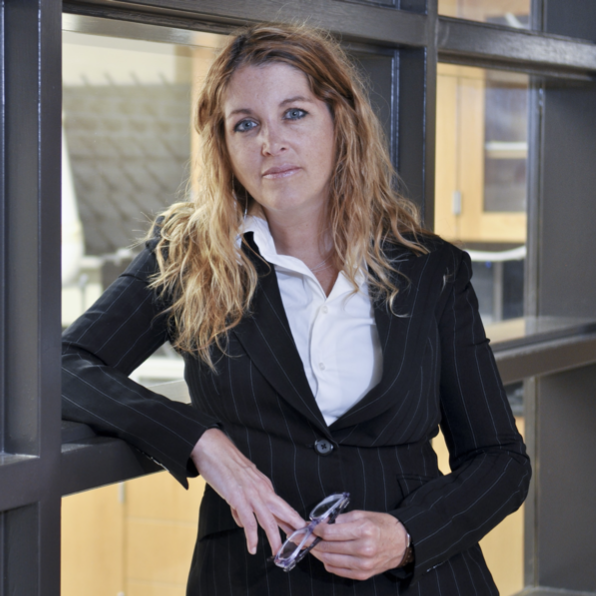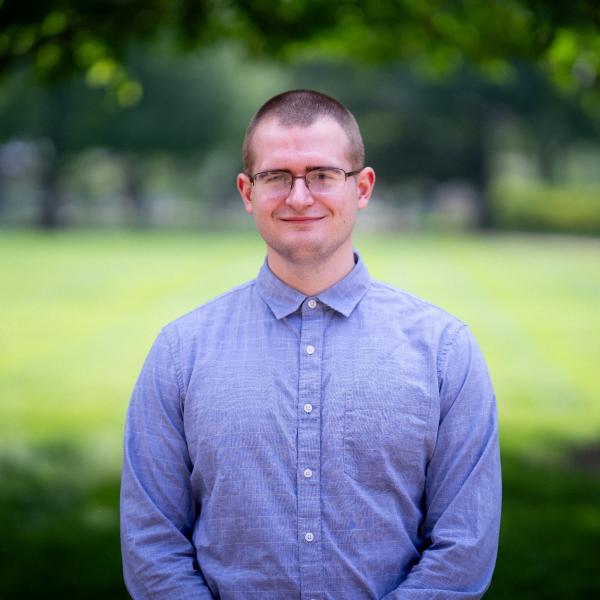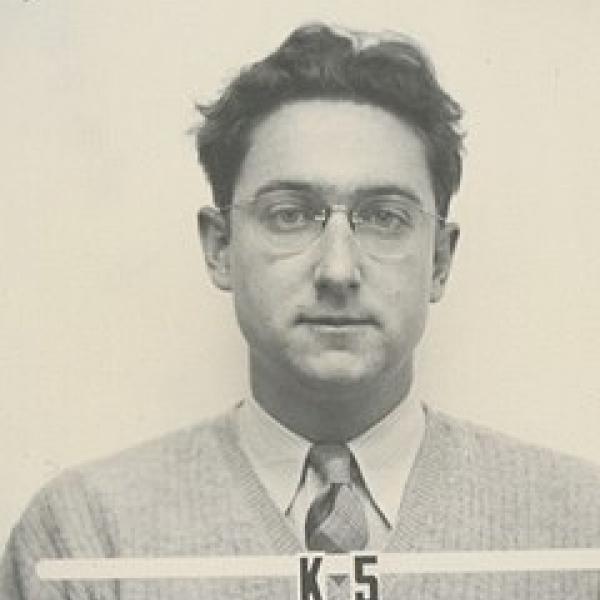Women’s History Month is set aside to remind us of the often-overlooked accomplishments that women throughout the years have made to our culture and society. We're celebrating Women's History Month this year by highlighting a few extraordinary women who have made significant contributions to science. In this series, we are especially commemorating women scientists who have been associated with Washington University in St. Louis.

Gerty Theresa Cori
Gerty Cori, an Austro-Hungarian-American biochemist, was the third woman to win a Nobel Prize in science. She won the prize in 1947 for her role in the “discovery of the course of the catalytic conversion of glycogen.”
Gerty Cori was born Gerty Theresa Radnitz into a Jewish family in Prague, now Czech Republic, on August 15, 1896. It was a time when women were not given many opportunities to pursue a career in science, and Gerty lacked the prerequisites in Latin, physics, chemistry, and mathematics to pass the entrance examination to study at a university. Gerty spent a year studying the equivalent of eight years of Latin, five years of science, and five years of mathematics for what she called “the hardest examination I was ever called upon to take” and enrolled at the age of 18 in the medical school of the Karl-Ferdinands-Universität in Prague in 1914.
While attending medical school, Gerty met Carl Cori. They married in 1920, the same year Gerty graduated with a doctorate in medicine. Due to the rise of anti-Semitism in Europe, Gerty and Carl immigrated to the United Sates to pursue medical research at the State Institute for the Study of Malignant Diseases in Buffalo, New York. Though they were equally qualified, Carl was hired to run the pathology laboratory while Gerty was only given the position of an assistant pathologist. After working for eight years in Buffalo and publishing 50 papers while collaborating on their groundbreaking work on carbohydrate metabolism, Carl and Gerty left in search of a place that would treat Gerty with respect and equality. Despite her many accomplishments, only a few institutions would hire Gerty, and all refused to give her equal status and the same salary as her husband. In 1931, Carl and Gerty accepted an offer to work at Washington University in St. Louis where Gerty was given a position as a research associate at a salary 1/10th of that given to Carl who was hired as a full professor. Gerty had to wait 13 years before she was appointed associate professor of Research Biological Chemistry and Pharmacology. She was finally promoted to full professor a mere two months before she was awarded the Nobel Prize.
Gerty and Carl collaborated in most of their research. Ultimately, they uncovered two major facets of systemic glucose metabolism: interorgan glucose-lactate cycling and glycogen metabolism. In 1929, they proposed the Cori cycle that later won them the Nobel Prize in Physiology or Medicine. Gerty was also known for studying glycogen storage diseases, where she helped identify at least four such diseases, each related to a particular enzymatic defect. She was the first to show that a defect in an enzyme can be the cause of a human genetic disease.
Additonal references: Women Who Changed Science, ACS Celebrates Women Scientists

Mary-Dell Chilton
Mary-Dell Chilton was born February 2, 1939, in Indianapolis, Indiana. She is one of the founders of modern plant biotechnology. Chilton likes being called a leading scientist, not a woman scientist, as she is among the best of both men and women.
From an early age, Chilton was drawn to science, particularly to astronomy. She joined an amateur telescope-making group and was constructing mirrors for telescopes, which led to her being selected as a finalist in the 1956 Westinghouse Science Talent Search at the age of 17. However, when she wanted to enroll in an astronomy course as a freshman at the University of Illinois, she was told to wait until her sophomore year. She quickly realized that it was hard to be taken seriously as a young female student. After being rejected from astronomy, she majored in physics before switching to chemistry, in which she received her Bachelor of Science. During graduate school, she was drawn to the new field of molecular biology that arose after the discovery of DNA by Watson and Crick. Chilton wrote her doctoral thesis on bacterial transformation. She identified a DNA fragment of Agrobacterium in tumor-like plant tissue, showing that this bacterium can cause tumors in plants by inserting its DNA into the plant’s cells.
In 1979, Chilton moved to St. Louis for a faculty position at WashU. She and her research team found that removing the genes responsible for disease did not affect Agrobacterium’s ability to modify a plant’s genome. Ultimately, the efforts of Chilton's team led to the first genetically modified plants in 1983, and her findings are still the basis for one of the main methods in modern plant biotechnology.
In 1983, Chilton made the leap to industry and started working at Ciba-Geigy, now Syngenta Biotechnology, where she built one of the world’s leading industrial agricultural biotechnology programs. Her work led to the development of crops with increased yields and resistance to insects and disease. Further, plants could be modified to tolerate droughts and other adverse environmental conditions. Her groundbreaking research earned Chilton multiple awards, including the 1985 Rank Prize in Nutrition and the 2013 World Food Prize. Genetic modification is sometimes controversial, but “the fact that it's possible scientifically and technically is amazing,” said Philip Hammer, vice president of the Franklin Institute in Philadelphia, which awarded Chilton the Franklin Institute Award in Life Science in 2002. At age 82, Chilton is currently not working on company projects anymore, but she still goes to the lab to “work on what amuses her” and has no plans to retire.
Additional references: National Inventors Hall of Fame, Interview with Mary-Dell Chilton (Podcast)

Rita Levi-Montalcini
Rita Levi-Montalcini, an Italian-American neurologist, received the Nobel Prize in Physiology or Medicine in 1986 for the discovery of the nerve growth factor (NGF), which has provided a deeper understanding of medical problems including deformities, senile dementia, delayed wound healing, and tumor diseases. In 1952, Rita succeeded in isolating a substance harvested from tumors in mice that caused vigorous nervous system growth in chicken embryos. Her discovery of NGF contributed to our knowledge that human beings develop from a single cell that divides to form new cells.
Born into a stable and wealthy family in Turin, Italy, Rita and her twin sister were the youngest of four children. Her father was an electrical engineer and gifted mathematician, and her mother was a talented painter. Both parents instilled in Rita their high appreciation of intellectual pursuit. However, though her father had great respect for women, he believed that a professional career would interfere with the duties of a wife and mother. Thus, her father tried to prevent Rita and her two sisters from engaging in “studies which open the way to a professional career,” including enrolling in any university. At the age of twenty, a defiant and determined Rita realized that she could not adjust to a “feminine role” as conceived by her father and asked him to reconsider. Rita prevailed and entered medical school at the University of Turin.
In 1936, Rita graduated from medical school with highest honors and a degree in medicine and surgery. She then enrolled in three-year specialization in neurology and psychiatry. After spending a short period in Brussels as a guest at a neurological institute, Rita was forced to return to Turin because of the invasion of Belgium by the German army in 1940. Not giving up on her goals, Rita built a small research unit in her bedroom where she studied the effects of limb extirpation in chicken embryos. In the middle of the bombing of Turin by Anglo-American air forces in 1944, Rita was hired as a medical doctor and assigned to a camp of war refugees. In 1946, Rita was invited to work at WashU where she remained for 30 years before finally returning to Italy.
This is truly a remarkable story of a woman who broke barriers and traditional beliefs on her way to becoming a world-renowned scientist. Rita died in Rome on December 30, 2012 at the age of 103, becoming the longest-living Nobel Laureate.

Karen L. Wooley
Karen L. Wooley is internationally recognized as a leader in the area of multifunctional macromolecules (polymers and related materials). Karen has changed the way modern chemists think about the design, synthesis, and functionalization of organic polymers. She is credited with bringing a rational designed-based synthetic approach to the field of polymer chemistry, an approach traditionally reserved for small molecule synthetic targets like natural products. She is an associate editor for the Journal of the American Chemical Society and is a member of the American Academy of Arts & Sciences, the National Academy of Inventors, and the National Academy of Sciences.
Karen was born on July 9, 1966 and raised in Oakridge, Oregon. She earned a BS (1988) degree in chemistry from Oregon State University and obtained her PhD (1993) in chemistry from Cornell University with Jean M. J. Frechet (now emeritus at UC Berkeley). Karen’s independent career in academia began in 1993 as an assistant professor in the Department of Chemistry at WashU where she was promoted to professor in 1999 and installed as the James S. McDonnell Distinguished University Professor in Arts & Sciences. Karen also was affiliated with the Department of Radiology at WashU's School of Medicine through a joint appointment granted in 2007 as part of her active collaborations in the area of radiotherapeutics with the late Michael Welch (1939–2012). In 2009, Karen was recruited to Texas A&M University where she holds the W. T. Doherty-Welch Chair and University Distinguished Professorship in Chemistry, Chemical Engineering, and Materials Science & Engineering.
Karen’s scientific contributions to date include the publication of more than 350 peer-reviewed manuscripts, granting of 19 patents, and training of 42 postdocs, 85 graduate students, and 62 undergraduate students. Her awards and achievements, too vast to recount here, reflect her positioning at the forefront of her field. Some of her major discoveries include shell-crosslinked Knedel-like nanoparticles with biomedical applications such as drug and nucleic acid delivery. Her current program still leverages biomedical-based applications of functional nanoparticles and has expanded into new areas including protective coatings and biodegradable plastics that formed the basis of two companies for technology commercialization, Teysha Technologies and Sugar Plastics, where Karen serves as CEO and President, respectively.
Karen forever changed the scientific landscape at WashU through her dynamic research program, unparalleled leadership ability, and general zest for life. Her impact on the WashU community is best described by her colleagues:
“I view her as force of nature with an uncompromising commitment to her family, her science, and her role as an educator. The energy and passion that she brings to each is often unparalleled. Karen's group balances a commitment to fundamental discovery with practical applications to real life problems that resonates with her colleagues, students, and the broader community. She is a wonderful ambassador for chemistry. It is her nature to help, and her attitude is one of believing that people can accomplish big things. That combination leads Karen to set a high bar for people and to assist them in clearing that bar.”
– Kevin D. Moeller
“I collaborated with Karen and co-authored many papers with her through the Program in Excellence in Nanotechnology (PEN) funded by the NIH. She spearheaded this program and brought people together from UCSB (Craig Hawker), Berkeley (Jean Frechet), and the Medical School (Michael Welch and Steven Brody) to develop nanoparticle-based diagnostics and therapeutics. The momentum started when Karen saw a call for proposals from NASA and NCI to develop imaging agents for cancer and got me and Michael Welch involved. This small collaboration set the groundwork for a successful application for the PEN grant, which because of her high creativity and drive coupled with excellent managerial skills resulted in a highly successful research program in nanobiotechnology. I believe that she had developed one of the best cationic lipids for siRNA transfection at the time. She also took charge of the annual PEN meetings in St. Louis, which aside from organizing the program of speakers, involved hosting many lunches, dinners and activities. She always kept the scientific sessions lively with both illuminating questions and highly creative ideas for future projects, as well as the dinners and activities with accounts of her travel experiences, not to mention her superior dart throwing and bowling abilities. These were very exciting times and were made so by Karen’s tremendous drive and exuberance for life, which I also believe launched many successful academic careers for graduate students and postdoctoral research associates.”
– John-Stephen Taylor

Lan Yang
Lan Yang is a renowned physicist recognized for her groundbreaking contributions to the field of photonics, especially for her pioneering work on non-Heritian photonics, optical sensing, and light-matter interactions in optical resonators. Currently, Yang is the Edwin H. & Florence G. Skinner Professor in the Preston M. Green Department of Electrical and Systems Engineering in the McKelvey School of Engineering at Washington University in St. Louis.
Yang was born and raised in the Hunan province of China during a time when girls did not go to high school but rather were expected to attend professional schools. At age 14, Yang decided that she wanted to attend high school instead: “I wanted something that can change the world,” she said. Because she needed her parents' permission to attend high school, Yang went on a hunger strike until they agreed with her. They granted her the permission she needed to go to high school that same day.
Yang obtained her bachelor’s and master’s degrees in science from the University of Science and Technology of China in 1997 and 1999, respectively. In 2000, she obtained a second master’s degree in materials science at the California Institute of Technology and went on to pursue a doctorate in applied physics from the same university, which she obtained in 2005. Yang joined the faculty at Washington University in St. Louis in 2007. She became an associate professor in 2012 and then a full professor in 2014. Currently, Yang is the top patent-holder among female faculty at WashU. As of 2020, she holds seven patents and over a dozen patent pending applications.
In her research, Yang tailors chemical compositions and nanostructures to achieve advanced micro/nano photonic devices with desired properties, such as an all-optical analog of an electronic diode that allows current flow in one direction. “For me, science is about doing something to help people, to make the community a better one,” Yang said.
In 2010, Yang won a National Science Foundation CAREER Award, and in 2011 she was honored by President Barack Obama with a Presidential Early Career Award for Scientists and Engineers (PECASE). This award is the highest honor bestowed by the United States government on science and engineering professionals in the early stages of their independent research career. In 2019, Yang was named editor-in-chief of Photonics Research, a journal published by the Optical Society of America (OSA) where she is a fellow. Yang is also a fellow of the Institute of Electrical and Electronics Engineers (IEEE), the American Physical Society (APS), and the American Association for the Advancement of Science (AAAS).
Additional references: Changing the World Through Science




